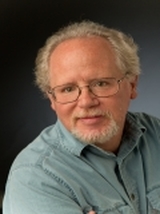If you have an idea for a blog post, I would love to have you contribute. Just send me an email.
Crag has done significant work as an editor of two books. The first book was The Critical Merits of Young Adult Literature. I was one of the reviewers of the book for the publisher and was thrilled to write the forward. The second book is released today! It represents Crag deep interest in teaching and studying Comics. The title is Teaching Comics Through Multiple Lenses. This week, Crag discusses an assignment he uses with his pre-service students in a YA course. If you would like to read Crag's first posting just click here.

Alas. But I can summarize what I have been reporting back to my students after reading their autobiographies, the patterns that are so deep they are inescapable ruts. English majors tend to start school as avid readers, reading with family and independently through elementary school. Perhaps half continue in this vein into middle school, growing into and with a community of peer readers, while the other half scale back on their reading because of the pressures of extracurricular activities (e.g. sports).
 This photo is linked to Kelly's webpage
This photo is linked to Kelly's webpage When I first started teaching the YA literature course the resistance was palpable. My students were English majors who went from reading chapter books and/or series to reading the classics, The Babysitter’s Club to Jane Eyre. YA literature was never an option. I remember in the first week of class a student asking pointedly, “Why are we reading kid books in a college English class?” But then the students who read the Harry Potter series growing up arrived. The resistance became non-existent. Now my students come with extensive experience reading YA literature in and out of class (Laurie Halse Anderson, John Green, The Hunger Games, Divergent, and many, many titles and authors I have not heard of). So rather than skipping over YA literature, they have read it alongside the classics they love.
All papers will be read in small groups. Together, they will give us a portrait of the class as readers as we begin our exploration of young adult literature.

My earliest memories of reading consist of those times I volunteered to read aloud in class. Maybe this was in 1st, 2nd, or 3rd grade, I can’t pinpoint it. I took this classroom exhibition as a moment to seize the English language – I have always robustly loved the sounds of words - to project it through my voice toward my peers. To embody language. Or maybe I was just a show off.
I read the funnies, comic books, the sports page, the backs of baseball, basketball, and football cards, and I read biographies of athletes I wanted to emulate – Jackie Robinson, Babe Ruth, Bart Starr, Jerry Kramer, Gale Sayers, or short novels about the sports I played such as The Catcher with the Glass Arm by Matt Christopher. These show what kind of reader I was – looking through print to measure and extend my world, to entertain me but also to point me toward something beyond myself, seeking ways to better myself. Reading to know.
It hurts to say reading drove a wedge between me my peers, from my friends, but what I was learning about the world and myself always felt right. Eventually, reading led me to a way to make a life, to make a living, to living a life, vocation and avocation hand in hand. After ten years of working jobs I came to despise, the obvious overwhelmed me: I had to find some way to do everyday – to get paid for – what I did everyday, what I had to do everyday – read, think, read, imagine, think, read, and imagine. Teaching rose to the top of a short list of possible jobs (editor, literary agent, journalist) because I also realized I didn’t just want to work with texts; I wanted to work intimately with readers and writers of texts; I want to be a positive trigger for how readers responded to texts.
Not only was the course an eye-opener for me as a reader – or an eye-blurrer, reading a book a week on top of my other classes – but that course did more to prepare me to work with young readers than any other class I took as a pre-service teacher: it gave me rich resources to draw from at the beginning of my teaching career, a list of books that my students found both challenging and rewarding (even as they struggled with the other reading – Shakespeare, Oedipus Rex, Toni Morrison’s Sula – that I was required to assign).
When I was asked to design and teach the young adult lit course at Washington State University in 2000 (shoot, that was already more than a 15 years ago?), I was ecstatic. I had been away from young adult literature for a few years, my reading focused on poetry and adult fiction and non-fiction, and I quickly found out I had missed much, including the Harry Potter rage (I caught the fever the summer the fourth book came out). But I also found out that what I was missing could be easily made up by a summer of reading into the wee hours of the morning. Blurry eyed again!
Young adult literature is thriving. I can’t wait to meet new friends – many works that you will introduce me to – and to re-acquaint myself with the old. As a teacher, and now it comes down to that, I aim to facilitate. I want to provide students with the opportunities to learn as I have learned, through reading, what they do not think they want to learn.
If you have an idea for a blog post, I would love to have you contribute. Just send me an email.














 RSS Feed
RSS Feed